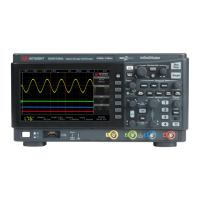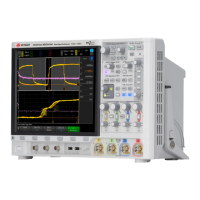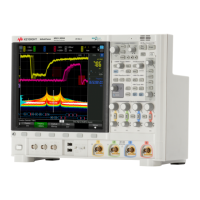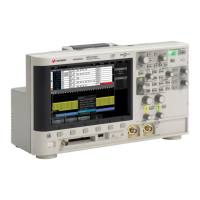585
Keysight InfiniiVision DSOX1204A/G Oscilloscopes
Programmer's Guide
27 :TRIGger Commands
Control the trigger modes and parameters for each trigger type. See:
• "Introduction to :TRIGger Commands" on page 585
• "General :TRIGger Commands" on page 587
• ":TRIGger[:EDGE] Commands" on page 597
• ":TRIGger:GLITch Commands" on page 603 (Pulse Width trigger)
• ":TRIGger:PATTern Commands" on page 611 (DSOX1000-Series oscilloscopes
only)
• ":TRIGger:SHOLd Commands" on page 616 (DSOX1000-Series oscilloscopes
only)
• ":TRIGger:TRANsition Commands" on page 622 (DSOX1000-Series
oscilloscopes only)
• ":TRIGger:TV Commands" on page 627
Introduction to
:TRIGger
Commands
The commands in the TRIGger subsystem define the conditions for an internal
trigger. Many of these commands are valid in multiple trigger modes.
The default trigger mode is :EDGE.
The trigger subsystem controls the trigger sweep mode and the trigger
specification. The trigger sweep (see ":TRIGger:SWEep" on page 596) can be
AUTO or NORMal.
• NORMal mode — displays a waveform only if a trigger signal is present and the
trigger conditions are met. Otherwise the oscilloscope does not trigger and the
display is not updated. This mode is useful for low-repetitive-rate signals.
• AUTO trigger mode — generates an artificial trigger event if the trigger
specification is not satisfied within a preset time, acquires unsynchronized data
and displays it.
AUTO mode is useful for signals other than low-repetitive-rate signals. You
must use this mode to display a DC signal because there are no edges on which
to trigger.
The following trigger types are available (see ":TRIGger:MODE" on page 594).
• Edge triggering— identifies a trigger by looking for a specified slope and voltage
level on a waveform.

